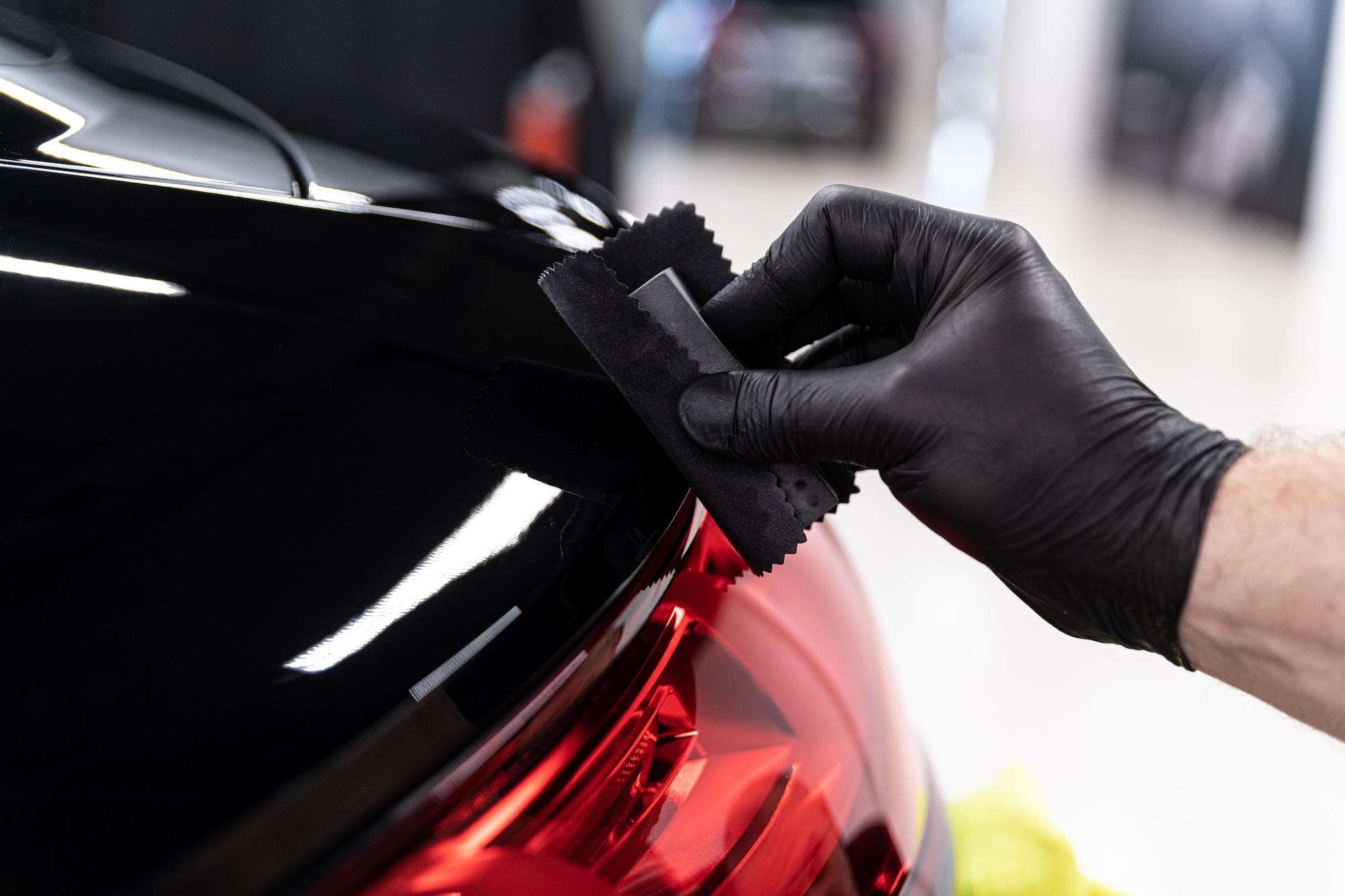Best Car To Buy: Past winners

This week, our editorial team disclosed the five finalists contending for Best Car To Buy 2023. We’ve spent the year logging tens of thousands of miles test driving more than 100 new vehicles (both 2022 and 2023 models) to help shoppers evaluate vehicles based on value, efficiency, safety, interior spaciousness, quality, design, and driving dynamics. The winner doesn’t need to be good at each of those things—it needs to be great.
In a sign of the times, four of the five finalists this year come with electrified powertrains, but bucking current trends, four out of five cost below $40,000. We consider vehicles priced up to $100,000, but prioritize those below $50,000.
MORE: Follow all our Best Car To Buy 2023 news as we name a winner
Best Car To Buy 2023 carries over our tradition of spotlighting those vehicles that might not get the splashiest coverage but instead excel at what they were intended do and exceed expectations of owners. A look at past winners provides a sound foundation as we crown a winner for our 13th annual Best Car To Buy award, to be announced Jan. 4, 2023.
Here are the past winners—all of which we still stand by today—with what we wrote when they were named.
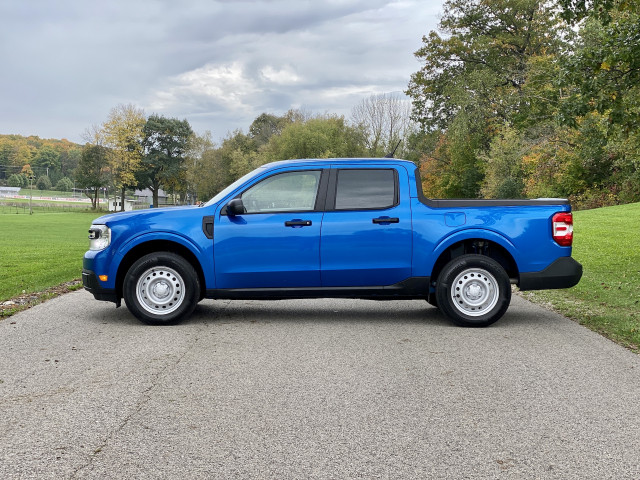
2022: Ford Maverick
Ford’s return to the small pickup truck segment was a unanimous and unequivocal win across our editorial board. One year later, it still sounds too good to be true: A hybrid pickup truck getting 37 mpg combined that costs less than $25,000. It’s easy to stand by what we wrote last year: “It’s not powerful, it doesn’t tow much, and the interior’s covered in more plastic than an indoor playground. It’s basic and it’s brilliant…the Maverick isn’t trying to be anything more than it is, an economical small pickup, and we love its uncommon honesty.”
Related to the Ford Escape and Ford Bronco Sport compact crossovers, the Maverick sits below the Ranger in Ford’s truck lineup, but it’s roomier and more truck-like than the Hyundai Santa Cruz. Two demerits that Ford hasn’t yet fixed: Cruise control costs extra, and the hybrid powertrain only comes with front-wheel drive. The hybrid powertrain uses a 2.5-liter inline-4 for a total output of 191 hp and 155 lb-ft of torque; it can tow 2,000 pounds. Double that capacity with the 2.0-liter turbo-4 that makes 250 hp and 277 lb-ft, and pair it all-wheel drive. But that pairing, and the indecisive 8-speed automatic transmission, neuters the Maverick’s overall value due to its 25 mpg combined rating with AWD.
At just 54.4 inches, the small bed suits most active lifestyles, fitting two mountain bikes with their front wheels angled. The bed walls have dual covered bins and up to 10 tie-downs, and the tailgate can hold up to 400 pounds and tote 4×8 sheets of plywood without a bed extender. The Maverick won’t be confused for a work truck, but it can handle getaway duties, moving days, and weekend home projects with greater utility than a crossover SUV. Four people fit in the crew cab, though the 35.9 inches of rear legroom can be tight for taller passengers.
Even though it comes with automatic emergency braking and an 8.0-inch touchscreen with smartphone compatibility, we’d step up to the XLT Hybrid that costs about $26,000 this year. It adds alloy wheels, cruise control, and other modern touches to complement the Maverick’s overall utility. We still recommend it as one of our top choices.
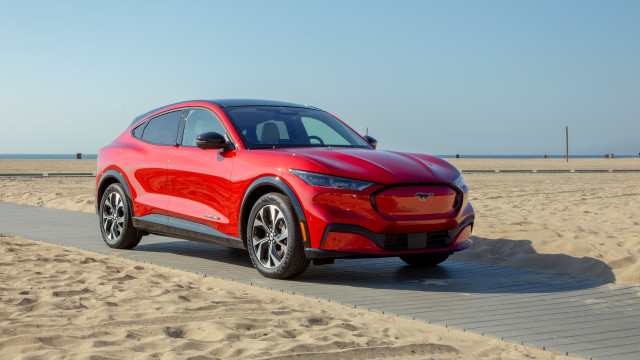
2021: Ford Mustang Mach-E
Ford’s first mass-produced electric vehicle with a dedicated platform honors the Mustang badge in a sporty crossover package loaded with standard features. It’s the first electric vehicle to earn The Car Connection Best Car To Buy award, but it likely won’t be the last.
The Mach-E has the styling cues of its pony car namesake, the five-seat roominess of a crossover SUV, and the performance that bridges the gap between them. With the larger 88-kwh battery pack and a second motor mounted up front for all-wheel drive, the Mach-E darts to 60 mph in 4.8 seconds; the GT model can do it in 3.5 seconds. Gut-dropping acceleration uninterrupted by gear shifts is the secret joy of owning an electric vehicle, and the Mustang Mach-E upholds that in every configuration, even in single-motor rear-wheel-drive models, where range is prioritized over performance.
With no driveshaft tunnel, the Mach-E can actually fit five passengers. The coupe-like roofline is offset by an airy and open fixed-glass roof on all but the base model. Standard features include automatic emergency braking, adaptive cruise control, a 15.5-inch touchscreen, and wireless smartphone charging.
With a 300-mile range that rivals only the Tesla Model Y and a price that undercuts it by at least $7,000, Ford’s electric crossover appeals to the masses like a Model T for the electrified age. Starting at $43,995, it’s affordable, easy to operate, fun to drive, and stays relevant with over-the-air updates. We’ve yet to drive another electric crossover SUV at this price that has moved us like the Mach-E, though rivals are chasing its heels.
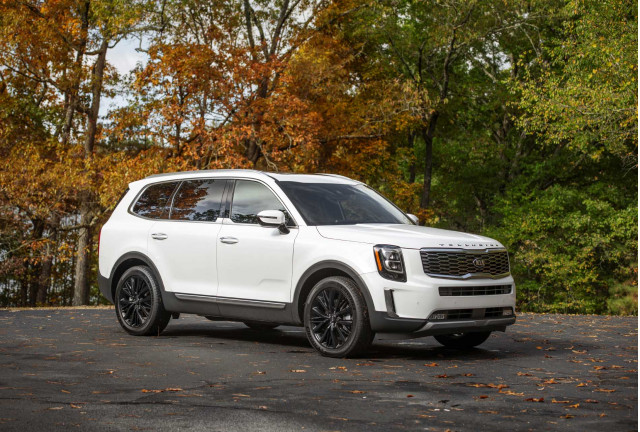
2020: Kia Telluride
The 2020 Kia Telluride won our Best Car To Buy voting by a landslide. The handsome crossover SUV that seats up to eight passengers bested the related 2020 Hyundai Palisade on looks alone, but it also excelled with loaded standard features at a value, and creature comforts that could pass for a luxury vehicle. We weren’t alone in our praise for the largest Kia; even before the COVID-19 pandemic restricted supply, shoppers waited months to take delivery of the Telluride because Kia couldn’t build them fast enough.
What was so special about another three-row crossover SUV? It stood out in the dull sea of family haulers by being the best family vehicle, best crossover, best and highway cruiser. It also had the best interior and the best exterior, and it came with superlative safety equipment and many standard features, ranging from adaptive cruise control and smartphone compatibility to a reassuring 5-year/60,000-mile warranty. The 291-horsepower 3.8-liter V-6 paired to an 8-speed automatic transmission with available all-wheel drive made the spacious SUV feel much lighter on its rounded feet, and it was still reasonably efficient at 20 mpg city, 26 highway, 23 combined.
Ultimately, the Telluride climbed far above the nine other nominees. The rugged truck-like looks balanced the sophistication of a Land Rover with the edge of a GMC Denali, but with distinction clearly marked for the Telluride. The clean lines and refined finished carried over to the inside, where it took on minivan roominess and its available power-folding third row seat opened up 46 cubic feet of space. No other vehicle for 2020 brought it all together in such a compelling package, especially in our recommended EX trim for about $40,000.
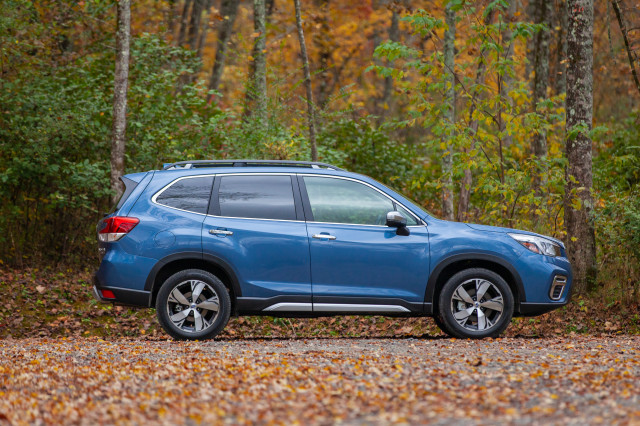
2019: Subaru Forester
It shouldn’t have been a surprise that a crossover SUV topped our Best Car To Buy 2019 contest. America’s best-selling segment teemed with good selections but the 2019 Subaru Forester stood above the rest for its unbeatable blend of everyday practicality and value. It’s not the first time that Subaru has nailed our criteria: the 2014 Subaru Forester was our Best Car To Buy 2014, representing our only repeat winner.
The redesigned 2019 Subaru Forester might not have turned many heads but it got heads nodding in appreciation once behind the wheel. The spacious interior, great forward vision, standard active safety features, good fuel economy of 29 mpg combined with standard all-wheel drive, and impressive comfort and convenience features made it an all around great vehicle with great value.
We recommended a well-equipped Forester Premium for $28,300, which appealed to our frugality without feeling like a budget crossover SUV. There were more powerful compact crossovers than the Forester’s 182-horsepower 2.5-liter flat-4 with a continuously variable transmission, and there were stronger outward personalities. But no other 2019 vehicle matched the Forester’s blend of function, comfort, safety, and value.
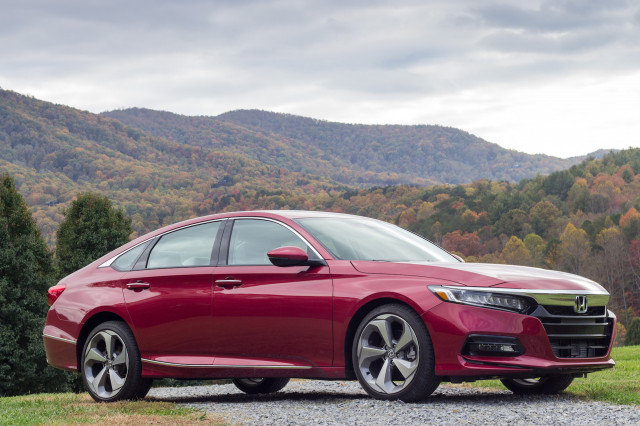
2018: Honda Accord
The 2018 Accord wowed us before we even drove it with its sleek styling, fuel-efficient engines, and luxury-level interior. Then we drove it. Expectations: exceeded. The 2018 Accord was enough to keep us in the sedan fold even against an onslaught of crossover SUVs that handle family duties with minivan-lite confidence.
Honda’s move to a turbocharged engine lineup gave the Accord some much-needed verve without sacrificing fuel economy. The all-day comfort of its seats combined with its improved Apple and Android-compatible infotainment made the Accord pleasant for daily commutes and for long highway treks. Top trims ride on an adaptive suspension that we said “hits our sweet spot.”
And at around $25,000 to start, the Accord was highly equipped at every level and cost well less than the average new car. Our enthusiasm for Honda’s mid-size sedan hasn’t waned, even as buyers flock toward crossover SUVs.
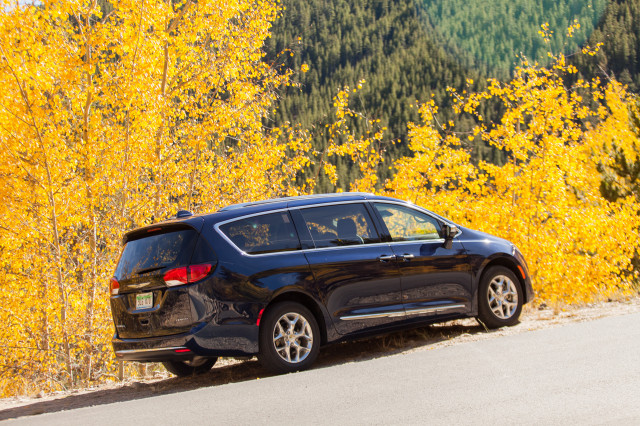
2017: Chrysler Pacifica
The minivan isn’t dead—if anything, it’s becoming the “thinking family’s hauler.” It’s with that mindset that the 2017 Chrysler Pacifica easily won us over. Its flexibility was unmatched by anything on our nominee list. Between two rows of seats that fold into the floor to create a completely flat load space at the tug of a pair of levers, a high-class interior with lots of standard and optional technology, and a strong V-6 engine, the Pacifica checked off all our boxes.
Later in the model year, a hybrid version arrived. Factoring in a federal rebate, the hybrid’s actually cheaper—and thriftier—than the standard model, although it lost the hideaway second row that tucked into the cargo floor.
The Pacifica won’t reboot minivans as buyers increasingly flock to less useful crossovers, but those in the know certainly get it.
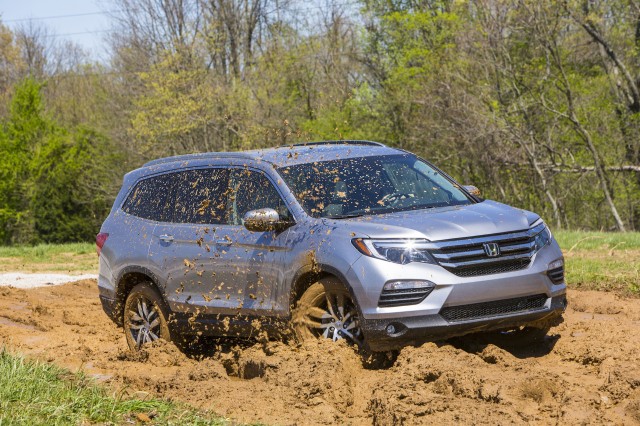
2016: Honda Pilot
In 2016, Honda surprised us with its third-generation Pilot. Its predecessor was surprisingly trucky, but the new-for-2016 Pilot arrived with slick styling and road manners to match. In typical Honda fashion it made leaps and bounds inside where buyers need the most, gaining a far more versatile interior with excellent space for every passenger.
Moreover, the Pilot was surprisingly good to drive. We called it “suave, slick, with great utility and safety to boot” last year, and the same holds true now.
Competition only gets fiercer among three-row crossovers, but the Pilot remains a standout. An update for 2019 made active safety tech standard and reworked some of the optional transmission’s shortcomings.
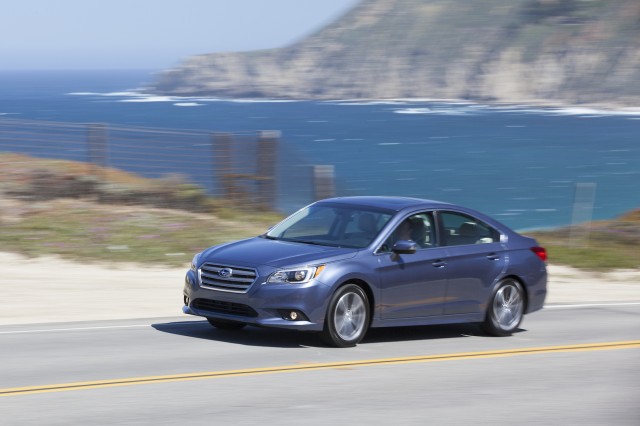
2015: Subaru Legacy
Displacing even its versatile Subaru Outback sibling, the mid-size Legacy won the 2015 award for a variety of reasons. It was as polished to drive as any rival, and it came standard with all-wheel drive. Its spacious interior trended toward luxurious with its soft materials and elegant design, and Subaru didn’t skimp on active safety tech.
We had an especially competitive pool of rivals for the 2015 award, but the Legacy’s outstanding value helped it: “It’s the value factor that really nudges the Legacy ahead of every other contender,” we reported.
Today, the Legacy retains those solid virtues and remains desirable among mid-size sedans—especially with active safety gear newly standard for 2019. A revamped Legacy bowed for 2020.
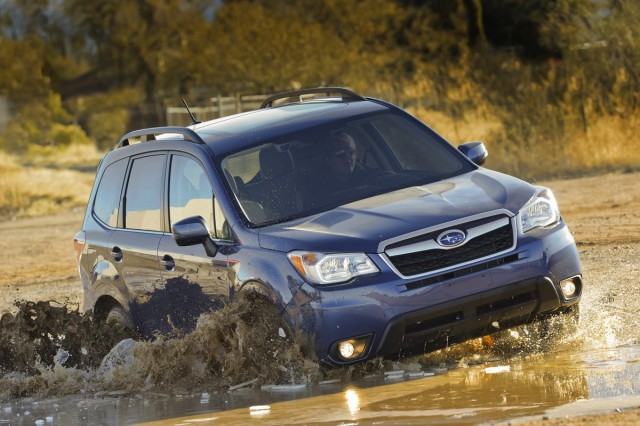
2014: Subaru Forester
With its wide range of trim levels, two powertrains, standard all-wheel drive, and stellar outward visibility, the Subaru Forester was an easy choice as the Best Car To Buy 2014. We liked its base 4-cylinder engine as much as the zippy turbo unit in the Forester XT, and we were especially appreciative of its move toward mainstream.
“It’s no longer an oddball niche wagon; instead it’s a fully sorted, thoughtfully designed vehicle in nearly every respect, looking beyond the crowd that dons Tevas and fleeces and incorporates a carabiner in their daily commute gear,” we said.
Subaru reworked the Forester for 2019, keeping its chunky looks but swapping in a new, stiffer platform and a more versatile interior.
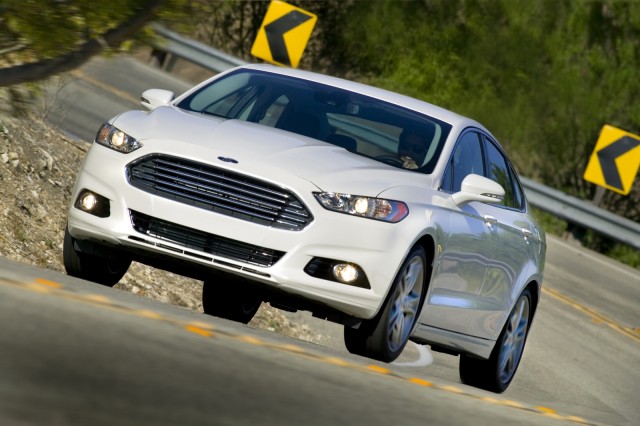
2013: Ford Fusion
Aston Martin-like styling wasn’t the only thing that attracted us to the Ford Fusion a few years back. Making its predecessor look like the humble choice that it really was, the redesigned Fusion brought some much-needed style and a wide range of engine options to the mid-size sedan. Not only that, but also it was entertaining to drive and comfortable on the freeway.
“There’s nothing exotic on its spec sheet, but the Fusion steers briskly, rides firmly, and barely conceals the European-engineered sport sedan hiding behind its American nameplate,” we said.
Today, the Fusion is starting to feel a little long-in-the-tooth up against more recently redesigned rivals, but it’s still a looker. A new Fusion Sport with a twin-turbo V-6 infused (pardon the pun) this model with some more excitement, but Ford has plans to drop sedans from its lineup over the next year.
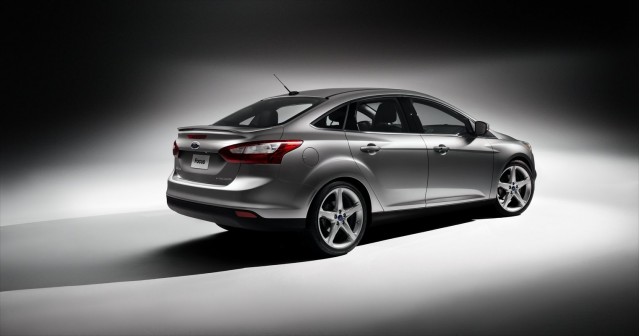
2012: Ford Focus
Ford looked to Europe for the 2012 winner, too, with its new Ford Focus. American buyers were short-changed a Focus redesign (its predecessor dated back to the late 1990s), but we found a Focus that was totally worth the wait. Available as a sedan or a five-door, the Focus was fun to drive and was a good value. Suddenly, everything else in its class felt, well, outclassed.
“Even in a day where dull, droning econoboxes are the exception rather than the rule, the 2012 Focus grabs attention, both for the way it looks and for the way it handles,” we said back then.
Ford chose not to replace the Focus after this model’s run. It retired the name after the 2018 model year and shelved plans to bring the redesigned model to the U.S. in favor of crossovers and pickup trucks.
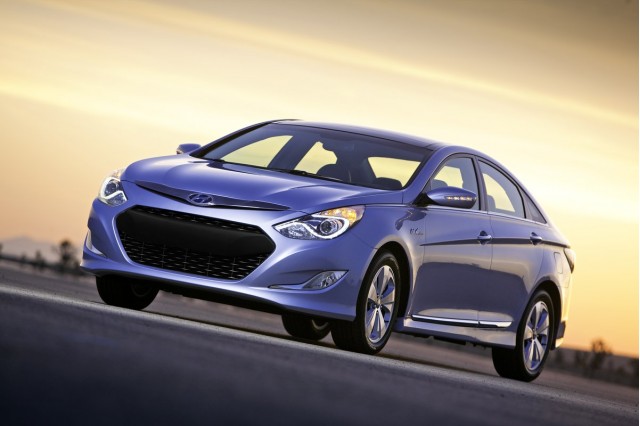
2011: Hyundai Sonata
Few cars have wowed the auto industry in recent years like the Hyundai Sonata. Going from dull to stop-and-stare in just a single generation, the Sonata is the model that vaulted Hyundai into the mainstream. Every Hyundai since owes its success to the 2011 Sonata. We loved its lineup that included naturally aspirated and turbocharged 4-cylinders, as well as a thrifty hybrid, which helped us award it top honors in our inaugural Best Car To Buy competition.
“That it does so at a base price of $19,995 is a testament to the thorough transformation it’s undergone—in moving to a U.S. assembly site, in adopting a vivid and memorable new styling theme, and in delivering top-notch safety and a full list of standard features, right out of the box.”
Hyundai redesigned the Sonata for 2015 and updated it again for 2018. The latest models don’t capture the 2011’s magic, but they remain excellent mid-size sedans. A stylish new Sonata was introduced for 2020.





